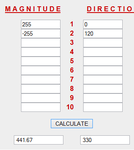amanpreetk
Junior Member level 2
How can I connect three phase supply of 415 volts to 12 volts through a step down transformer?
I have a 3-input and 3-output terminal transformer.What are the various connections I need to make?
I have a 3-input and 3-output terminal transformer.What are the various connections I need to make?

